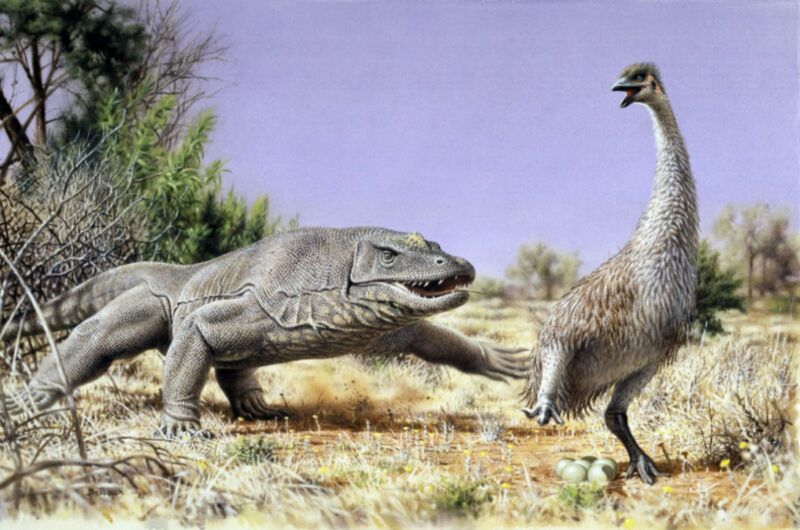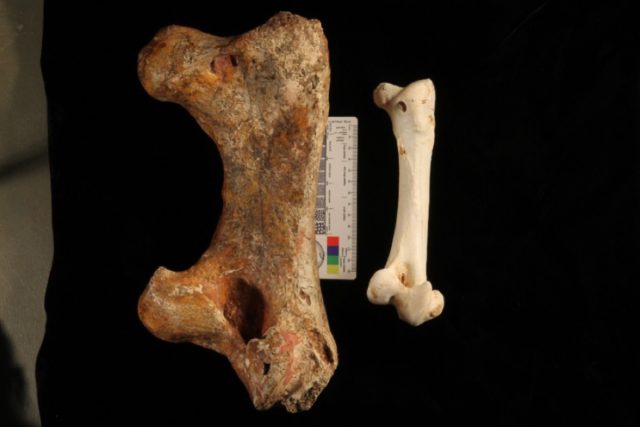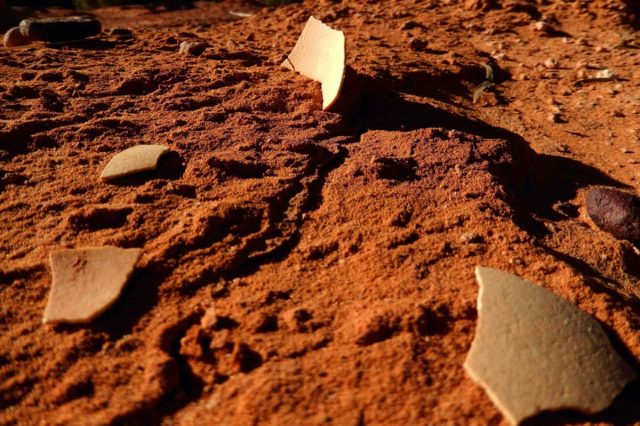[ad_1]

Peter Trusler
More than 65,000 several years ago, massive flightless birds dubbed “Demon Ducks of Doom” roamed prehistoric Australia. The creatures stood over six and a 50 % feet (two meters) tall, weighed above 440 pounds (200 kgs), and sported substantial beaks. They also made large cantaloupe-sized eggs that might have served as a meals source for early human inhabitants, eventually contributing to the extinction of the demon ducks, in accordance to a new paper printed in the Proceedings of the Countrywide Academy of Sciences.
Technically identified as Genyornis newtoni or mihirung paringmal (“thunder fowl”), the species was to start with described in 1896 based on the discovery of a fossilized left femur excavated from a website at Lake Callabonna in South Australia. Further excavation yielded a lot of a lot more fragments of avian fossils and finally primarily comprehensive specimens, which includes the cranium. Similar specimens have because been located at other internet sites in New South Wales, Queensland, and Western Australia. The species went extinct inside of a several thousand years following human beings arrived in the location.
There are two competing hypotheses for why Genyronis grew to become extinct: weather modify or the impression of the arrival of people. For occasion, there is some fossilized evidence that the Genyornis inhabitants at the Lake Callabonna web site perished since the lake dried up due to climate change, depriving the birds of their h2o source. On the other hand, a 1999 study of far more than 700 eggshell fragments concluded that the species’ decline and extinction transpired too rapidly to be attributed to climate alter, suggesting that human activity was to blame. Particularly, early individuals in the area may have collected and eaten Genyornis eggs faster than the creatures could lay them and reproduce.

Trevor Worthy
There are 1000’s of Pleistocene sites throughout Australia littered with eggshell fragments, some of which present proof of getting been cooked and discarded around a fireplace, in accordance to the authors. Most notably, a 2016 review examined eggshell fragments with melt away marks collected from some 200 web sites and analyzed the amino acid composition. The shells ended up dated to involving 53,900 and 43,400 yrs ago, and the amino acid gradient was regular with the eggs owning been put on embers (as opposed to bush fires). Particularly, the amino acids had been completely decomposed in the burnt close, with concentrations raising as the investigation moved additional absent alongside the eggshell.
There was also a second type of eggshell from an undetermined species that showed indicators of cooking in the course of a much narrower time frame. But did that kind of eggshell actually come from Genyornis? The human-induced extinction hypothesis rests greatly on this currently being the circumstance.
These forms of eggshells were initially attributed to Genyornis in 1981. The shells were observed reasonably around skeletal stays and appeared about the ideal size to have been developed by Genyornis, which is distantly relevant to modern-day chickens, pheasants, quails, ducks, and geese. Men and women would have collected the eggs from the ground nests built by these substantial flightless birds, therefore contributing to their extinction.

Gifford H. Miller
Nonetheless, a lot more the latest papers have questioned that identification, suggesting that the eggs arrived from a rooster-like species of extinct megapode, the large malleefowl (Progura), a smaller sized mound-making creature with huge feet weighing between 11 to 15.4 lbs . (5 to 7 kg). These researchers have argued that the eggshell is also slim, and the egg dimensions way too modest, to have been made by Genyronis.
[ad_2]
Supply hyperlink


